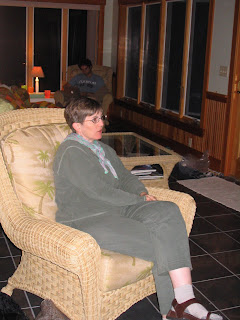While doing my usability testing homework, I came upon this url relating to Shelfari on the Mooresville Public Library wiki’s Readers’ Advisory page: http://lu.com/ranews/sep2007/hanley.cfm. When you click on this link, you get an e-letter published by “Libraries Unlimited”. This September 2007 issue includes an article by Dave Hanley called, “Connect with Readers and Patrons on Shelfari.” Hanley is Shelfari’s VP of Marketing. He writes that the “level of activity of Shelfari’s members has honestly surprised us.” Of special interest may be the FAQs for librarians. Click on that and see if anything appeals to you/your library.
While Hanley claims to be surprised by the response to Shelfari, the author of an article in this month’s Economist explains its high response. “Social Graph-iti” argues that there is “less to Facebook and other social networks than meets the eye,” and “Silicon Valley’s craze for the ‘social graph’ is overdone.” (p83) The author argues that Facebook’s longevity arc is short because too many people are in the network: “social networks lose their value once they go beyond a certain size. ‘The value of a social network is defined not only by who’s on it, but by who’s excluded’”. (83) The future of social networking, according to this article, rests on the “small is beautiful” axiom and on users’ ability to construct their own social networks for their circle of friends – which is just what Shelfari does.
Did anyone see the article by Michael Cart called, “Teens and the Future of Reading” in the October issue of American Libraries? In a nutshell, “Not everyone believes the sky is falling on the state of America’s reading” (p 52, Michael Cart). While the National Endowment for the Arts and the National Assessment of Educational Progress have put out reports claiming a serious “falling-off of the reading rate” and a “plateauing or decline of reading scores among early teens”, (p53), YA author Marc Aronson and YALSA past president Pam Spencer Holley point out that “it depends on what you consider ‘reading’” (53). The argument circles around traditional print materials (literary reading, general reading, all printed matter) versus technology-based reading (e.g., listening to audiobooks, reading graphic novels and non-fiction, blogs, wikis, text messages). The article also addresses the astonishing revival of reading for pleasure that JK Rowling’s Harry Potter books have triggered –which bodes well for reading scores, since the NEA acknowledges the link between reading for fun and reading proficiency. The International Reading Association advises adolescents to “have access to ‘a wide variety of reading material that they can and want to read.’” (p54) Due to a 51% increase since 1995 in the number of YA librarians currently working in libraries, young adults can get direction to access materials they want. Plus, a new Harris Interactive poll indicates that young people are going to libraries. Only one out of five say they have not gone to the library in the past year, and of those who go, 78% say they go “to borrow books and materials for my own personal use.” (p54) Clearly, the current emphasis on young adult literature and literacy, (e.g., Teen Read Week, Teen Tech Week, and Support Teen Literature Day), is helping and will continue to help the future of teen reading.
Subscribe to:
Post Comments (Atom)

1 comment:
Interesting post, Sue. I agree with the Holley comment about what is considered reading. People, both children and adults, are shifting from paper to audio/video. I am hoping that some of the skills you learn in this class will help all of you be more sensitized to this shift.
Post a Comment